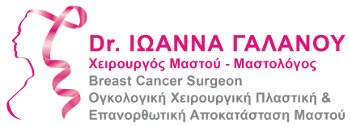Breast Cancer Treatments
RADIATION THERAPY
Radiotherapy after conservative surgery for breast cancer is imperative, because it reduces the risk of recurrence and mortality.
The meta-analysis based on 10,801 patients of the Early Breast Cancer Trialists Collaborative Group (EBCTCG) found that radiation therapy given after tumor removal in conservative surgery in the following 10 years, reduced the risk of recurrence from 35% to 19.3% (p ˂0.00001). In selected and few cases, radiation therapy is performed after mastectomy.
RADIATION THERAPY AFTER SURGERY (EXTERNAL)
There are 2 types of external beam radiation therapy:
- IМRT (Intensity Modulated Radiation Therapy)
- IGRT (Image Guided Radiation Therapy)
These are techniques that protect healthy organs (lungs, heart) during radiation therapy. In special cases, such as in the case of positive lymph nodes and advanced stage breast cancer, radiation therapy is given to the axillary cavity and supraclavicular fossae. External radiation therapy sessions are daily for about 1 month.
RADIATION THERAPY DURING SURGERY (INTERNAL) – INTRAOPERATIVE RADIOTHERAPY
(IORT- Intraoperative Radiotherapy)
This type of radiation therapy is performed during surgery in less than 2 minutes, immediately after the removal of the malignant tumor in the breast, protecting healthy organs such as lungs and heart.
IOeRT uses high energy electrons. There are 2 protocols used in the largest European Oncology and Research centers for breast cancer, such as in Rome, Milan, Udine, Madrid, etc. as well as in America, centers in which Dr. Ioanna Galanou obtained her specialization and was very involved in the subject.
There is single-dose IOeRT that replaces one-month sessions of external beam radiation therapy and IOeRT as BOOST in which one dose is given intraoperatively followed by a few sessions of external beam radiation therapy.
The 2 protocols for breast cancer are as follows:
- IOeRT as a SINGLE DOSE: ELIOT Protocol (21 Gy 90% isodose) (1)
- IOeRT as BOOST : IOB Protocol (10 Gy 90% isodose IOeRT boost following subfractionated external radiotherapy (40.5 Gy to 2.7 Gy)(2)
Dr. Ioanna Galanou is specialized and has used this particular method in the best European Oncology and Research centers. Her goal is to be able to use this technology in her home country as well.
(1) Intraoperative radiotherapy versus external radiotherapy for early breast cancer (ELIOT)˸ a randomized controlled equivalence trial, Veronesi U., Orecchia R. et al., Lancet Oncology 2013
(2) http://www.clinicaltrials.gov/ct2/show/NCT01343459?term=hiob&rank=1
CHEMOTHERAPY (post-operative / adjuvant or pre-operative / induction)
Chemotherapy is usually given to patients in whom breast cancer has a more aggressive behavior and depends on histopathological, prognostic and biological factors.
For example
- Triple negative breast cancer (with ER-/PRG-/HER2- receptors)
- HER2 positive (with HER2+ receptor positive)
- In some cases of hormone-dependent cancers that do not express HER2 (ie with ER+/PRG+/HER2- receptors).
There are 2 cases of chemotherapy:
- Chemotherapy can be given in selected cases such as in advanced stage cancers before surgery (preoperative or induction chemotherapy), with the aim of achieving complete pathological remission (PCR). PCR is defined as the complete absence of residual elements of invasive carcinoma both in the breast and in the lymph nodes. According to the existing literature, the rates of complete pathologic remission depend on the various subtypes and biological profiles of the cancer. Patients with HR- tumors have higher PCR rates compared to HR+ tumors. Patients with lobular carcinoma rarely have PCR. also, high rates of Ki67 and increased numbers of cancer-infiltrating lymphocytes (TILs) correlate with high rates of PCR.
- Postoperative or adjuvant chemotherapy is given after surgery. There are many scientific articles that analyze how long after surgery it is preferable to start chemotherapy. It is recommended not to exceed the time limit of 4-8 weeks.
The most successful chemotherapy regimens are polychemotherapy regimens and not monochemotherapy regimens, because they give better results in DFS (disease free survival) and OS (overall survival). These figures are the results of research and meta-analyses by the EBCTCG (Early Breast Cancer Trialists Collaborative Group). Polychemotherapy regimens can be first-, second-, or third-generation. Fortunately, there are new drugs that have been approved in Greece, with excellent results.
HORMONE THERAPY
Hormone therapy is indicated in hormone-dependent cancers with rates of at least ER+ (≥1%) and PRG+ (≥1%). Not indicated for receptor-negative cancers. However, it should be noted, the low effectiveness of the treatment in patients with ER between 1-10%.
The right choice of hormone therapy and its duration are related to whether the patient is in menopause, as well as to the risk of cancer recurrence.
In premenopausal women with a diagnosis of invasive cancer, treatment with tamoxifen and possible treatment with LH-RHa (luteinizing hormone releasing hormone agonists) should be considered in the first instance. LH-RHa administration correlates with age, cancer characteristics (pT, ,pN, Grade) and ER and PgR and Ki67 rates.
